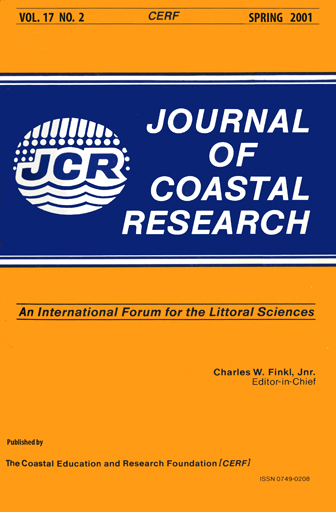Wave Runup, Extreme Water Levels and the Erosion of Properties Backing Beaches
Keywords:
coastal erosion, coastal management, ocean waves, tides, wave runup, Oregon.Abstract
A model has been developed to evaluate the susceptibility of coastal properties to wave induced erosion. The model includes analyses of the probabilities of extreme water levels due to tides affected by various oceanographic and atmospheric processes, and the runup elevations of storm waves on beaches. The application is to the Oregon coast where measured tides often exceed predicted astronomical tides by tens of centimeters, especially during the occurrence of an EI Nino. The measurements of wave runup on dissipative beaches typical of the Oregon coast depend primarily on the deep-water significant wave height, but when combined with other data sets show some dependence on the wave period and beach slope. Predicted extreme water elevations due to the combined processes are compared with measured elevations of the junctions between the beach face and the toe of foredunes or sea cliffs. The objective is to evaluate the frequency with which water can reach the property, providing an evaluation of the susceptibility to potential erosion. Application is made to a number of sites along the Oregon coast, revealing differences between the various littoral cells depending on the quantity of sand on the beach and its capacity to act as a buffer from wave attack. A more detailed application is made to the Newport Littoral Cell, demonstrating how this type of analysis can aid in making coastal management decisions. Although the application here is to the Oregon coast, the model can be used on other coastlines with evaluations of extreme tides and storm-wave runup specific to those locations.Downloads
Published
2001-04-27
Issue
Section
Articles


